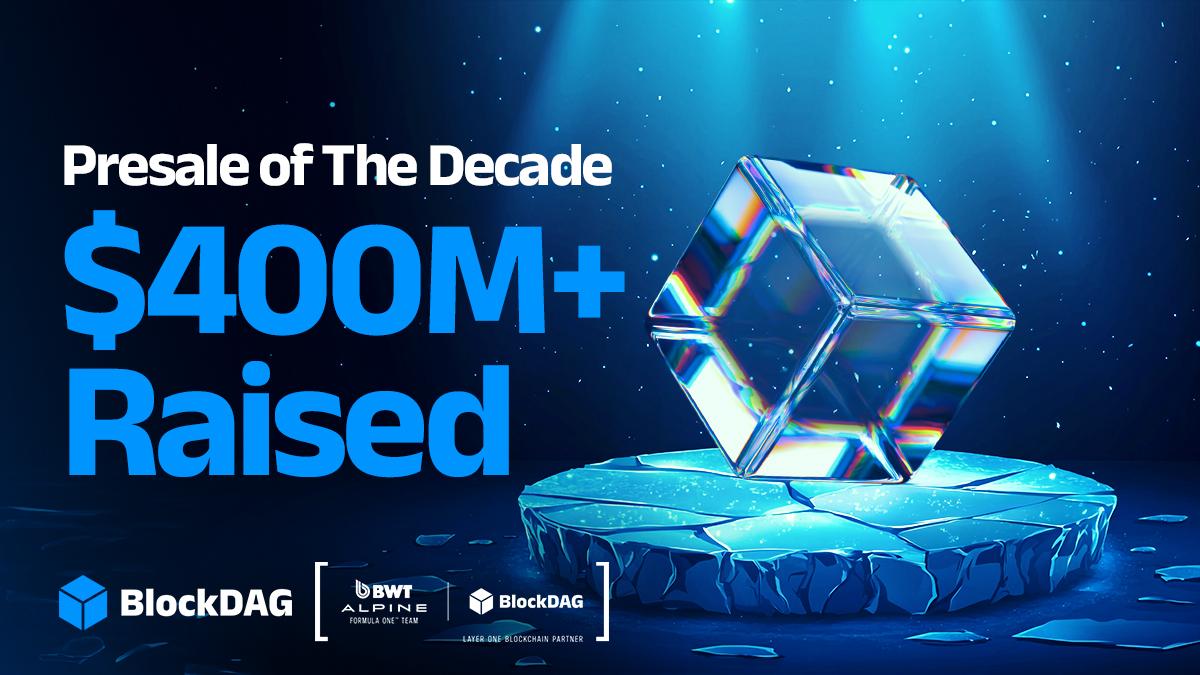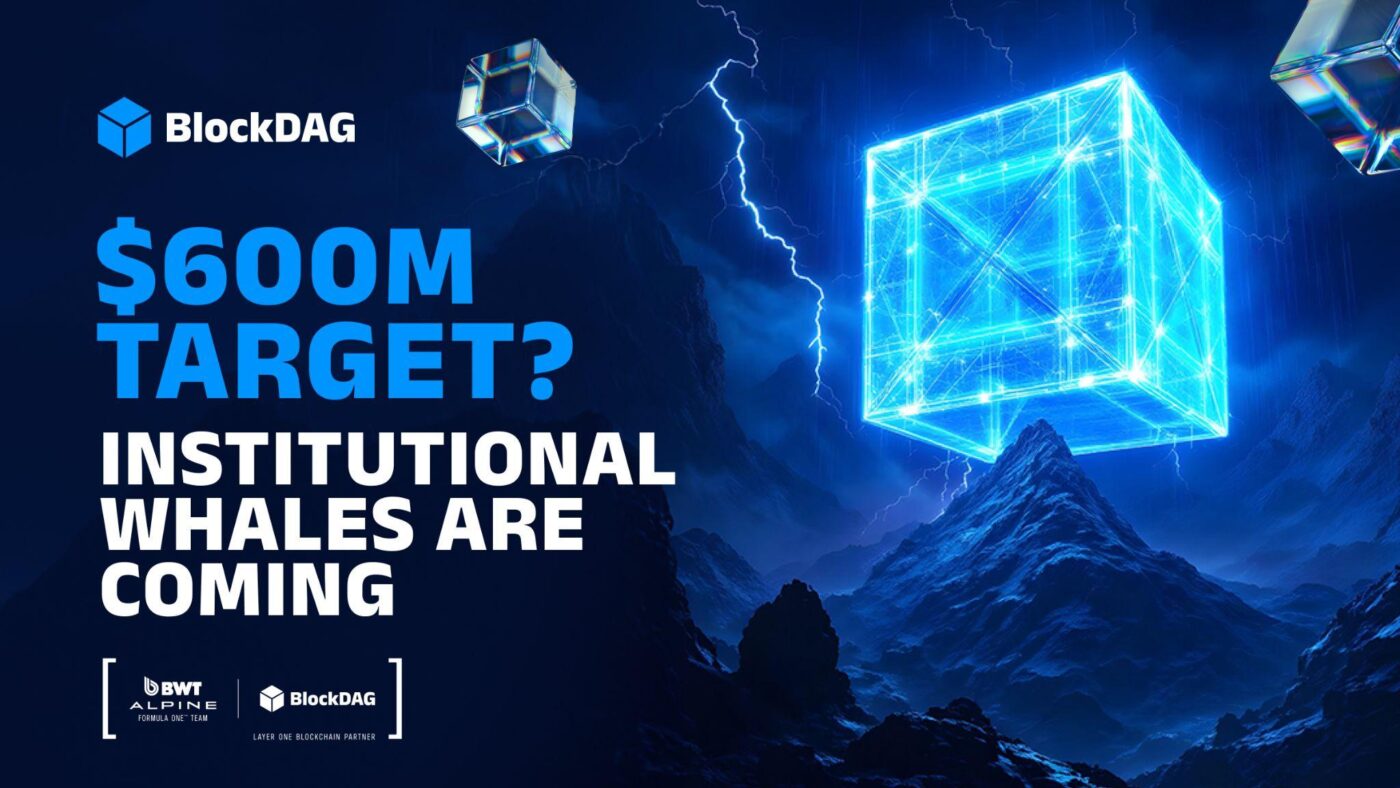In the evolving search for the best crypto for mining in 2025, two names are commanding attention: Kaspa and BlockDAG. Kaspa carved its path through a GPU-friendly Proof-of-Work model merged with DAG architecture, slowly earning credibility through grassroots miner adoption.
But now, BlockDAG (BDAG) is redefining what early-stage momentum looks like. With a hybrid DAG + PoW foundation, smart contract compatibility, and over 3 million mobile miners already onboard, BlockDAG’s infrastructure is launching with velocity.
It doesn’t just match Kaspa’s strengths, it multiplies them through real-world traction, ecosystem tooling, and unmatched presale scale. This comparison dives into who’s better positioned post-launch.
Kaspa’s Rise and the PoW+DAG Advantage
Kaspa gained attention by doing something few projects dared: combining Proof-of-Work with a Directed Acyclic Graph (DAG) architecture. This enabled high transaction throughput without compromising decentralization. Miners flocked to Kaspa thanks to its GPU-friendly mining algorithm and relatively low barrier to entry. The project’s climb into the Top 30 was steady, fueled by a loyal community, consistent network activity, and strong word-of-mouth among tech-savvy miners.
But Kaspa had to earn its growth over time. There were no presale fireworks or early retail buzz. Its infrastructure was solid, but its early ecosystem didn’t feature EVM compatibility or WASM support. For developers and users looking to build or transact within a smart contract ecosystem, Kaspa was limited to the core coin and a few surrounding tools.
That’s where BlockDAG pulls ahead, not by replacing Kaspa’s strengths, but by expanding on them.
Why BlockDAG Starts Further Ahead Than Kaspa Ever Did
BlockDAG’s network isn’t theoretical; it’s already running a full-scale Testnet, syncing miners through the Stratum Protocol, eliminating the UTXO model, and laying the foundation for EIP-4337 Smart Accounts. It includes real-time dashboard tools, a blockchain explorer, and a full smart contract layer with both EVM and WASM compatibility, something Kaspa still lacks.
Most notably, BlockDAG didn’t rely on community mining to scale. It pre-seeded its network with mass adoption tools. The X1 App, a mobile mining tool, has already surpassed 3 million users, making it one of the most widely distributed crypto onboarding experiences. On the hardware front, over 20,000 mining units have already sold globally meaning the BlockDAG network has a real-world physical footprint before even hitting major exchanges.
From a funding standpoint, it’s not even close. Kaspa grew organically, while BlockDAG has already secured $425 million+ in presale funding. That kind of war chest isn’t just for show it fuels partnerships, listings, and network growth at a speed retail miners and CEXs will notice.
Miner Adoption Curve and Market Positioning
In any Proof-of-Work chain, miner adoption is the heartbeat. Kaspa’s slow but steady GPU mining base was essential to its growth but it took time. BlockDAG starts post-launch with a massive pre-installed base of miners already tapping into the network via the X1 app and hardware rigs. No GPU requirement, no setup delays just plug in or tap the app and start contributing.
That early saturation gives BlockDAG a ranking advantage. With over 325,000 holders already, the project has immediate velocity in volume, wallet count, and distribution, all metrics CoinMarketCap tracks for ranking. Combined with its massive community, leaderboard gamification, and strong brand partnerships (like the BWT Alpine Formula One® Team), BlockDAG has everything it needs to trigger Tier-1 CEX listings early.
When Kaspa broke into the Top 30, it did so with a modest market cap. If BlockDAG even conservatively replicates that growth curve, its starting presale valuation already puts it in striking distance. A surge in post-launch volume could push it directly into the Top 30 range, bypassing the multi-month grind Kaspa endured.
Can BlockDAG Overtake Kaspa’s Ranking Trajectory?
Kaspa is still a relevant force. Its community is loyal, and the tech has earned its place. But BlockDAG’s presale momentum, hardware deployment, and miner-ready framework create a different launch profile. It’s not a slow burn. It’s a sprint out of the gate.
For a limited-time buyers can access BlockDAG at $0.0015 despite Batch 31 pricing of $0.0304, positioning early participants for potential gains if it breaks into the Top 30. While Kaspa rides GPU popularity, BlockDAG builds a multi-platform path, from mobile miners to smart contracts, highlighting the next phase of blockchain adoption.
Post-launch, if BlockDAG sustains just a fraction of its current traction across exchanges, wallets, and miner engagement, the Top 30 won’t be a question of if but when.
Is BlockDAG the Best Crypto for Mining in 2025?
Kaspa’s story proves that technical architecture and miner support can elevate a project into the Top 30 without massive marketing or celebrity backing. But BlockDAG rewrites that script by adding retail miner accessibility, multi-chain smart contract capability, and CEX-ready traction from day one.
Whether you’re a retail buyer, a miner, or a developer, BlockDAG looks like a crypto designed for rapid adoption. With hardware in hand, mobile miners in play, over $425 million raised, and more than 27B coins sold, its launch momentum is structurally different. If you’re scouting the best crypto for mining in 2025 not just in terms of equipment, but in ecosystem upside, BlockDAG has to be on your radar.
Watch next: Keep an eye on official CEX listing announcements, ecosystem dApp launches, and the transition to full mainnet Smart Account deployment. These are the signals that could cement BlockDAG’s Top 30 status faster than Kaspa ever managed.
Presale: https://purchase.blockdag.network
Website: https://blockdag.network
Telegram: https://t.me/blockDAGnetworkOfficial
Discord: https://discord.gg/Q7BxghMVyu
Disclaimer: This is a Press Release provided by a third party who is responsible for the content. Please conduct your own research before taking any action based on the content.








